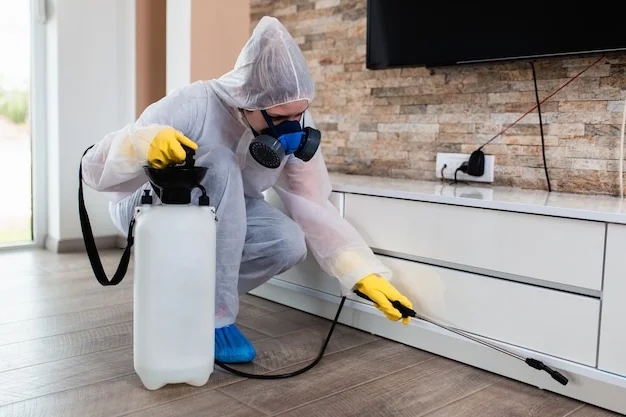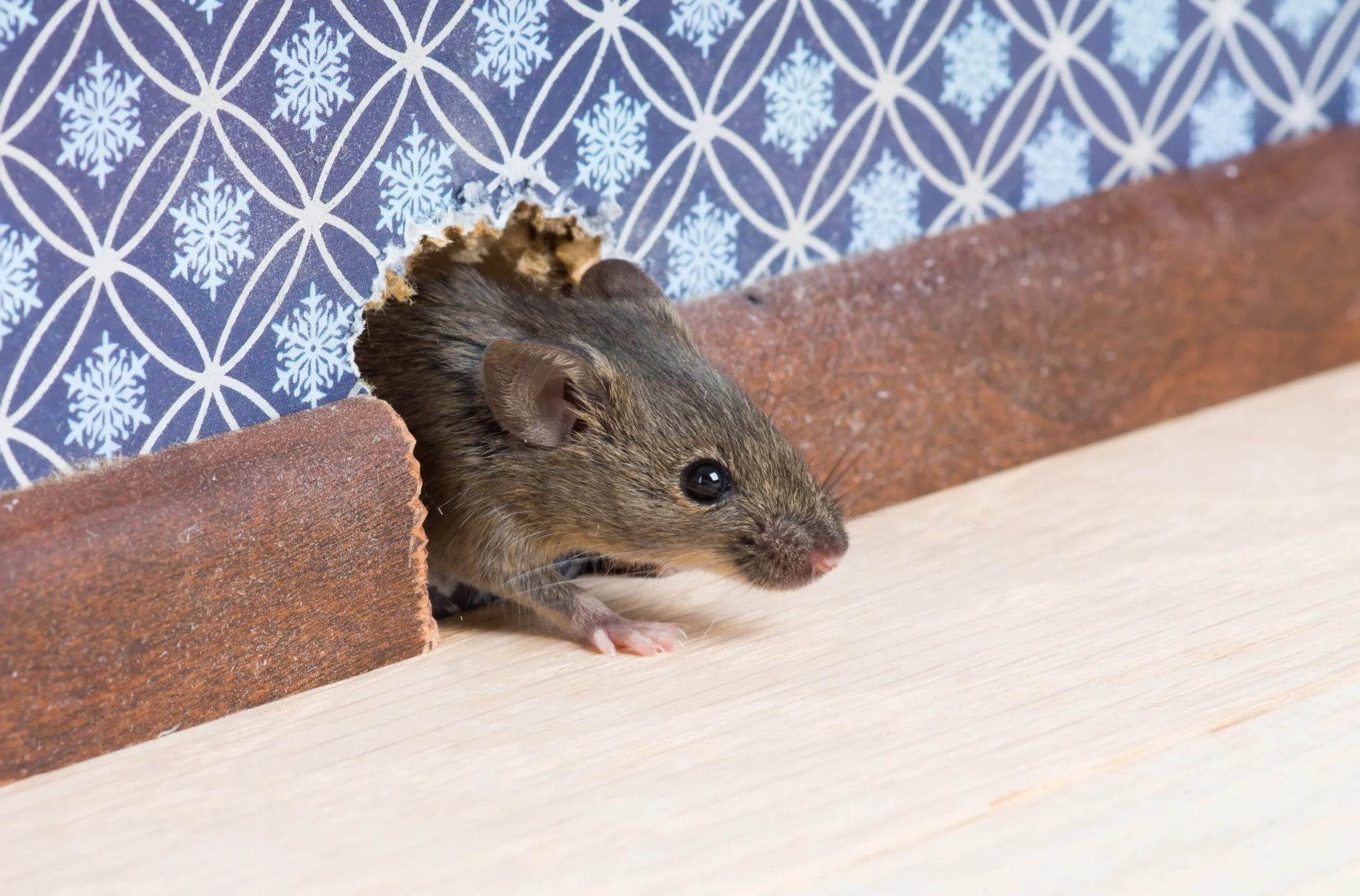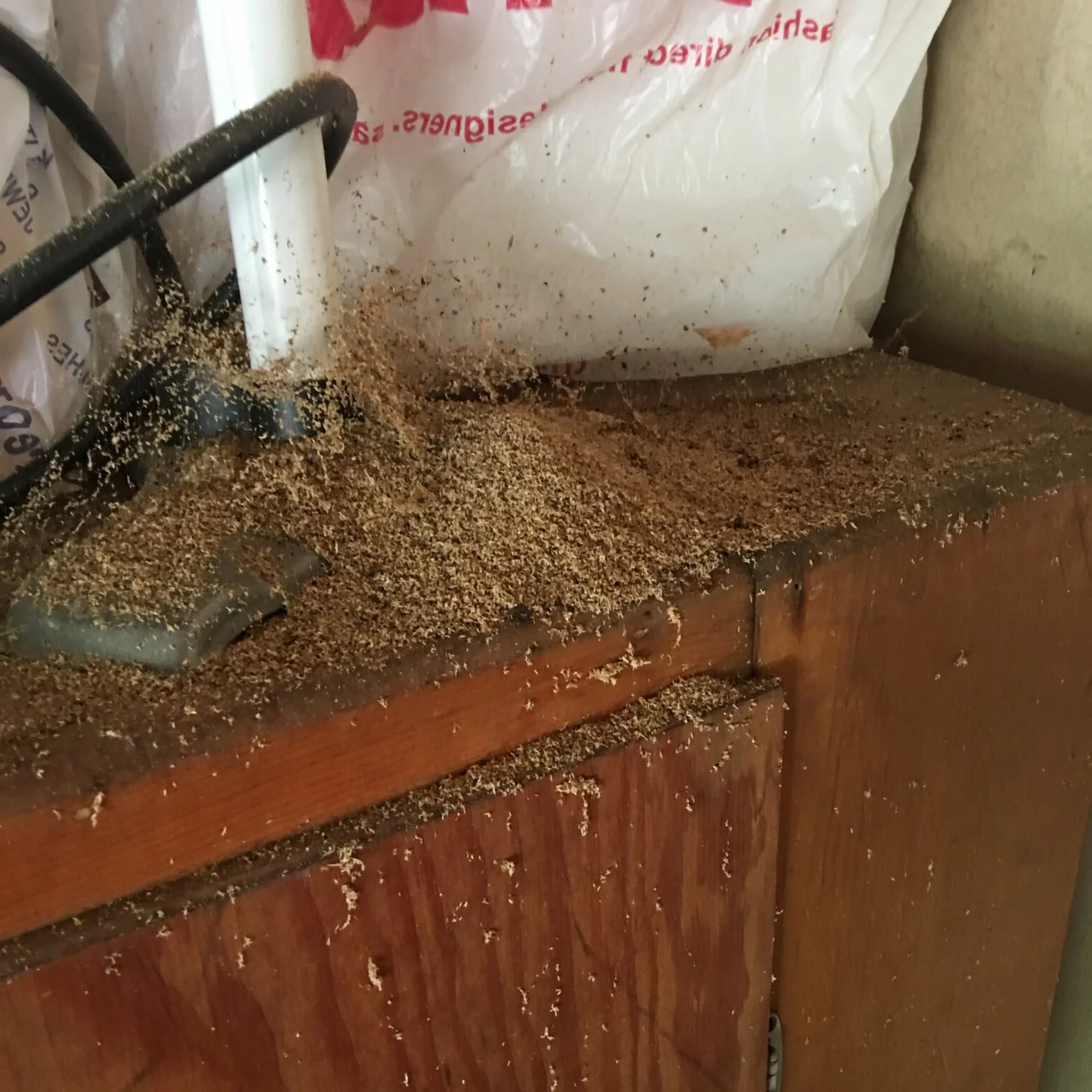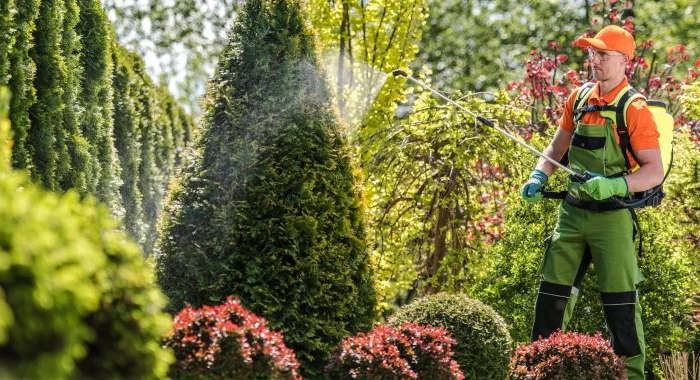From the lush Willamette Valley to the high desert of Central Oregon, the Pacific Northwest's diverse landscapes create ideal conditions for a variety of pests. Oregon's mild, rainy winters and increasingly warm summers provide perfect breeding conditions for moisture-loving insects, while abundant forests and urban green spaces offer shelter for rodents and wildlife. Professional pest control in Oregon requires understanding these unique regional factors – the dense forests, abundant rainfall, and mix of urban and rural environments that all contribute to pest challenges.
Homeowners and businesses throughout Oregon face persistent threats from pest infestations that can damage structures, contaminate food supplies, and pose health risks. That's why many residents turn to professional exterminators for effective solutions. Local experts know that sustainable, environmentally sensitive approaches are particularly important to Oregonians. In this guide, we'll explore common pest challenges across Oregon, how to address them with eco-friendly pest solutions, and why partnering with local professionals offers the most effective long-term protection for your property.
Need help with a pest problem? Our Oregon specialists provide
emergency pest control
24/7 and free
pest inspections to protect your home or business.
Schedule now for prompt service!
Pest Control Challenges Specific to Oregon
Oregon's diverse environments create unique pest control challenges. Here's why pest control in Oregon requires specialized knowledge and approaches:
-
Wet climate and moisture issues Western Oregon's abundant rainfall creates moisture problems that attract and sustain pests year-round. From moisture-loving carpenter ants to mold-feeding silverfish, the damp conditions in Portland, Eugene, and coastal areas make constant vigilance necessary.
-
Climate diversity Oregon's climate ranges from rainforest conditions on the coast to high desert in the east. This diversity means pest professionals must be familiar with multiple ecosystems and the various pests that thrive in each region, from dampwood termites in the west to drywood termites in southern regions.
-
Seasonal pest cycles While some states experience a winter die-off of many pests, Oregon's mild winters mean many insects remain active year-round, especially in heated structures. Spring brings emerging ant colonies, summer invites mosquitoes and wasps, fall drives rodents indoors, and winter keeps moisture pests thriving.
-
Urban-wildland interface Many Oregon communities border forests and natural areas, creating more opportunities for wildlife and forest insects to become household pests. Homes in areas like the outskirts of Bend, Eugene, or Portland suburbs are especially vulnerable to invasions from nearby natural habitats.
-
Environmentally conscious community Oregonians prioritize environmental stewardship, making eco-friendly pest management not just preferred but often expected. This means pest professionals must balance effectiveness with environmental responsibility, using targeted treatments and reduced-risk products whenever possible.
These factors make informed, proactive pest prevention particularly important in Oregon. Regular inspections and maintenance, combined with sustainable treatment methods, offer the best defense against the state's persistent pest challenges.
Common Pests in Oregon
Oregon's diverse ecosystems support a wide variety of pests. Below are some of the most common invaders Oregon residents and businesses encounter:
Moisture Pests
Professional treatment for moisture pests in Portland
Oregon's signature rain creates perfect conditions for moisture-loving pests. Carpenter ants are particularly problematic, excavating moist wood to create nests while potentially causing structural damage. Unlike termites, they don't eat wood but hollow it out for nesting, often targeting damp areas around leaky pipes, poorly ventilated crawl spaces, or wood with ground contact.
Other common moisture pests include silverfish, millipedes, and pill bugs, which thrive in damp basements, bathrooms, and crawl spaces. Effective control requires not just eliminating the pests but also addressing the underlying moisture issues through improved ventilation, fixing leaks, and ensuring proper drainage around foundations. Professional pest control in Oregon typically includes moisture management recommendations as part of a comprehensive treatment plan.
Rodents
Technician performing rodent inspection in an attic
As temperatures drop in fall and winter, Oregon homes face increased pressure from rats and mice seeking shelter. Norway rats are common in urban areas like Portland and Eugene, while roof rats are more prevalent in coastal communities. Deer mice, carriers of hantavirus, often invade rural properties and cabins, particularly in Central and Eastern Oregon.
Rodents can squeeze through remarkably small openings—mice need only a quarter-inch gap—making thorough exclusion work essential. Beyond structural damage from gnawing and nest-building, rodents contaminate stored foods, leave droppings that trigger allergies, and may carry diseases. Effective rodent control combines exclusion work (sealing entry points), habitat modification (reducing harborage areas), trapping, and targeted baiting when necessary.
Ants
Treating ant trails around a home's foundation
Several ant species plague Oregon properties, with odorous house ants being the most common household invader. These small black ants emit a distinctive coconut-like smell when crushed and form trailing colonies seeking sweet foods in kitchens. Carpenter ants, larger and more destructive, are particularly problematic in Western Oregon's moist climate. Pavement ants and moisture ants round out the list of frequent invaders.
Unlike some pests, ants cannot be effectively controlled with just spraying. Professional ant treatment typically involves identifying the species, locating nests or trails, using targeted baits that workers carry back to the colony, and addressing conditions that attract them. Long-term success means eliminating food sources, sealing entry points, and trimming vegetation touching the structure. Many Oregon pest control companies now offer specialized ant control programs designed for the state's persistent ant problems.
Spiders
Oregon is home to numerous spider species, most of which are beneficial predators that help control insect populations. However, house spiders, cellar spiders, and giant house spiders commonly invade homes, creating webs in corners, basements, and crawl spaces. While generally harmless, their presence disturbs many homeowners. The yellow sac spider, capable of delivering a painful bite, often hides in clothing or bedding.
Two medically significant species require special attention: the black widow (found primarily in warmer, drier areas of Central and Southern Oregon) and the aggressive house spider (or hobo spider), which can inflict painful bites. Professional spider management typically involves targeted crack and crevice treatments, web removal, reducing exterior lighting that attracts their insect prey, and sealing potential entry points around the foundation and utility penetrations.
Stinging Insects
Oregon's summers bring increased activity from yellowjackets, paper wasps, hornets, and bees. Yellowjackets are particularly aggressive and commonly nest in ground burrows, wall voids, or attics. Paper wasps build open-comb nests under eaves and deck joists, while bald-faced hornets create large aerial paper nests in trees and shrubs. While these insects provide ecological benefits as pollinators and predators of garden pests, nests near human activity areas pose significant sting risks.
Professional treatment of stinging insects requires proper identification of the species and nest location before safely removing or treating the colony. This work often necessitates specialized equipment and protective gear, particularly for aggressive species or hard-to-reach nests. Many Oregon pest control companies provide dedicated wasp and hornet removal services during the summer months when these insects are most active.
Eco-Friendly Pest Control Approaches
Oregon's strong environmental ethos makes sustainable pest management a priority throughout the state. Modern eco-friendly pest solutions focus on minimizing environmental impact while effectively addressing pest problems. Integrated Pest Management (IPM) is the standard approach, combining biological controls, habitat modification, improved sanitation, and mechanical trapping with targeted, reduced-risk product applications only when necessary.
Many Oregon pest control companies now offer green service options that minimize synthetic pesticide use. These might include botanical insecticides derived from plant oils, microbial products that target specific pests, reduced-risk baiting systems, or dust treatments applied to targeted areas rather than broadcast spraying. These approaches are particularly important for protecting Oregon's waterways and salmon populations, which can be harmed by certain pesticide runoff.
Oregon's Watershed Protection
Our Oregon pest control specialists are trained in watershed-friendly practices to protect the state's precious rivers, streams, and the wildlife that depends on them, including endangered salmon species.
Below is a comparison of different eco-friendly pest management approaches commonly used in Oregon:
| Approach |
Description |
Best For |
| Exclusion & Habitat Modification |
Sealing entry points, reducing harborage areas, improving drainage, and eliminating food sources to make environments less hospitable to pests.
|
Long-term prevention of rodents, ants, moisture pests, and overwintering insects.
|
| Botanical Treatments |
Products derived from plant essential oils (such as rosemary, thyme, and cedar) that repel or affect the nervous systems of insects while breaking down quickly in the environment.
|
Perimeter treatments, spot treatments for ants and spiders, and situations where quick breakdown is preferred.
|
| Targeted Baiting |
Using small amounts of attractants containing control products in tamper-resistant stations, allowing pests to carry material back to colonies.
|
Social insects like ants and termites; rodent control with minimal risk to non-target wildlife.
|
| Microbial Controls |
Bacteria, fungi, or nematodes that target specific pests without harming beneficial organisms, pets, or people.
|
Garden pests, soil-dwelling insects, and mosquito larvae in water features.
|
| Mechanical Controls |
Physical methods like trapping, vacuuming, heat treatment, or freezing to eliminate pests without chemicals.
|
Bed bugs, rodents, and isolated insect infestations in sensitive environments.
|
By combining these approaches, Oregon pest management professionals can address pest issues while respecting the state's commitment to environmental stewardship. Professional services typically begin with a thorough inspection to identify the specific pest challenges and suggest the most environmentally sensitive solution for each situation.
Residential vs Commercial Pest Control
Residential Pest Protection
Oregon homes face unique pest pressures based on their location, construction type, and surrounding environment. Residential pest protection typically focuses on creating a protective barrier while ensuring treatments are safe for families, pets, and the environment. Regular service plans often include quarterly treatments, with additional attention during seasonal pest emergencies like summer ant invasions or fall rodent intrusions.
For many Oregon homeowners, service begins with a comprehensive inspection that identifies current pest issues, potential vulnerabilities, and environmental conditions that might attract pests. Treatment plans are then customized for each property, taking into account factors like proximity to natural areas, construction type (crawl space vs. slab), and specific pest pressures. Follow-up services adjust based on seasonal needs, with more attention to moisture pests in winter and stinging insects in summer.
Commercial Pest Control
Oregon businesses require specialized pest management that addresses their industry-specific needs while meeting regulatory requirements. Commercial pest control programs in Oregon are designed to protect reputation, prevent product contamination, and ensure compliance with health codes and industry standards. Food processing facilities in the Willamette Valley, restaurants in Portland, hotels along the coast, and healthcare facilities throughout the state all face different pest challenges requiring specialized approaches.
Commercial service typically involves more comprehensive documentation, including detailed service reports, monitoring device placement maps, and trend analysis to identify and address emerging issues before they become problems. Many Oregon businesses opt for Integrated Pest Management programs that emphasize prevention through improved sanitation, exclusion, and structural modifications, using targeted treatments only when necessary. This approach is particularly valued by businesses committed to sustainability and environmental stewardship.
From residential pest protection programs to customized
commercial pest control services, we provide effective solutions throughout Oregon –
schedule your service today to protect your property!
Why Choose Local Oregon Pest Control Experts?
Working with pest control professionals who understand Oregon's unique environments offers significant advantages. Here's why partnering with local experts provides better results for your home or business:
-
Regional pest knowledge Local experts understand Oregon's diverse ecosystems and the specific pests that thrive in each region, from the damp coastal environments to the dry climate east of the Cascades. This knowledge leads to more accurate identification and more effective treatment strategies.
-
Weather-adapted solutions Oregon's weather patterns significantly impact pest behavior and treatment effectiveness. Local professionals know how to time treatments around rainfall patterns, adjust techniques for seasonal temperature changes, and recommend preventive measures based on upcoming weather trends.
-
Familiarity with local construction Oregon homes vary widely from century-old Craftsman bungalows in Portland to modern high-desert homes in Bend. Local experts understand the common construction methods in each region, the typical vulnerabilities of different building types, and how to effectively protect them.
-
Environmental stewardship Local professionals understand Oregon's environmental regulations, watershed protection requirements, and community expectations regarding sustainable pest management. This knowledge ensures treatments protect your property while respecting the state's natural resources.
-
Responsive service When you discover rats in your attic or yellowjackets building a nest by your door, you need help quickly. Local providers can respond rapidly with technicians familiar with your area, offering emergency pest control when urgent situations arise.
By choosing local professional exterminators who understand Oregon's unique conditions, you get more effective, environmentally responsible solutions tailored to your specific pest challenges and property needs.
Get peace of mind with Oregon's most trusted pest professionals. Our local experts deliver reliable pest control in Oregon tailored to your needs –
contact us today for a free inspection!
Top Cities for Pest Control in Oregon
Different regions across Oregon face varying pest challenges based on their climate, elevation, and surrounding environment. Here are some key Oregon cities and the unique pest control needs they face:
Portland
Portland's damp environment and older housing stock create ideal conditions for moisture pests like carpenter ants, silverfish, and mold-feeding insects. The city's abundant green spaces and urban forest also lead to increased rodent activity and wildlife conflicts, particularly in neighborhoods bordering natural areas like Forest Park or along the Willamette River.
Bend
Central Oregon's high desert environment presents different challenges, with deer mice, carpet beetles, and spiders being common invaders. The region's colder winters drive rodents indoors, while hot, dry summers can force insects to seek moisture and shelter in homes. Properties near the Deschutes River or irrigation canals often experience increased pest pressure from mosquitoes and moisture-seeking insects.
Seasonal Pest Guide for Oregon
Spring (March-May)
- Ant colonies emerge and expand
- Overwintering pests become active
- Termite swarms appear on warm days
Recommendation: Schedule perimeter treatments before ant season peaks and inspect for rodent activity left from winter.
Summer (June-August)
- Yellowjackets and wasps build nests
- Spider populations increase
- Mosquitoes thrive in irrigated areas
Recommendation: Monitor for wasp nests and maintain exterior treatments to prevent indoor invasions.
Fall (September-November)
- Rodents seek indoor shelter
- Spiders become more visible indoors
- Box elder bugs and stink bugs invade
Recommendation: Seal entry points and implement rodent prevention before temperatures drop.
Winter (December-February)
- Moisture pests thrive in damp conditions
- Rodent activity increases indoors
- Stored product pests emerge in pantries
Recommendation: Conduct attic inspections for rodents and address interior moisture issues to prevent carpenter ants.
What Our Oregon Clients Say
"After struggling with persistent carpenter ant problems in our Portland home, we finally found a lasting solution. Their technician not only eliminated the ants but identified and helped us fix the moisture issues that were attracting them in the first place."
- Jennifer K., Portland
★★★★★
"We had quite the rodent situation in our Bend cabin after it sat vacant all winter. Their team was thorough, humane, and took the time to seal every possible entry point. We haven't heard a single scurrying sound since!"
- Michael T., Bend
★★★★★
"As a restaurant owner in Eugene, health inspections are always a concern. Their commercial service has kept our kitchen pest-free for three years running, and their eco-friendly approach aligns perfectly with our sustainable business values."
- Lisa M., Eugene
★★★★★
Frequently Asked Questions
How often should Oregon homeowners schedule pest control services?
Most Oregon homes benefit from quarterly pest control service to address seasonal pest cycles. Western Oregon properties often need more frequent service during ant season (spring through summer), while Eastern Oregon homes might require additional attention in fall when rodents begin seeking shelter. During your initial inspection, we'll recommend a service schedule based on your specific location, property type, and pest history. Many of our clients opt for our year-round protection plan, which includes regular preventive service and free emergency visits if problems arise between scheduled treatments.
Are your treatments safe for Oregon's environment, particularly around streams and water bodies?
Absolutely. We understand the importance of protecting Oregon's waterways and the wildlife that depends on them. Our treatments use reduced-risk products applied in targeted ways to minimize environmental impact. We follow strict protocols near water features, maintaining buffer zones around streams, ponds, and storm drains. For properties near sensitive areas, we emphasize non-chemical approaches like exclusion, habitat modification, and targeted baiting systems. Our technicians receive specialized training in watershed protection practices and follow all Oregon Department of Environmental Quality guidelines for pest management in environmentally sensitive areas.
What types of pests are unique to Oregon compared to other states?
While Oregon shares many common pests with neighboring states, our unique climate and geography create some distinctive pest challenges. The Western Oregon dampwood termite, which requires higher wood moisture content than other termite species, is relatively uncommon outside the Pacific Northwest. Giant house spiders, often mistaken for wolf spiders, are particularly prevalent in Oregon homes. We also deal with moisture-loving insects like the Pacific Northwest carpenter ant, which behaves differently than carpenter ant species in drier regions. Additionally, Oregon's coast faces unique challenges with sand fleas and beach flies, while high-elevation areas in the Cascades and Eastern Oregon have specialized wood-boring beetles not commonly found elsewhere. These regional pests require specific identification skills and treatment approaches.






